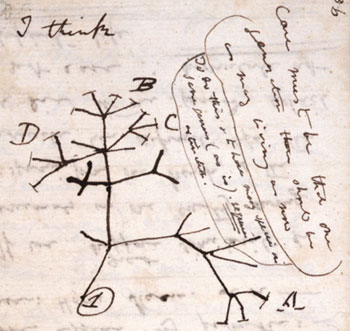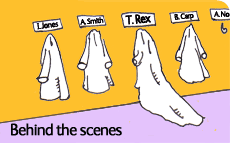Darwin's Tree of Life
Charles Darwin was the first person to draw a Tree of Life that showed that all species on Earth are related and that they evolved from a common ancestor.

Darwin's first sketch of the tree of life, found in one of his notebooks from 1837. Image reproduced by kind permission of the syndics of Cambridge University Library.
The drawing above is his original sketch of the tree, which was found in a notebook called ‘red transmutation notebook B’.
Darwin later made his theory of evolution public, in his book On the Origin of Species. It included his illustration of the Tree of Life.
The tips of the branches show the species that are still alive today, but the tree also shows all the species that have existed in the past but are now extinct. Darwin explained:
'From the first growth of the tree, many a limb and branch has decayed and dropped off; and these fallen branches of various sizes may represent those whole orders, families, and genera which have now no living representatives, and which are known to us only in a fossil state.'
(Orders, families and genera are all groups that can be used to classify organisms.)
The lines on the tree show evolutionary relationships between species. For example, a recent version of the Tree of Life would show a line between some types of dinosaurs and the earliest birds, as scientists think that birds evolved from dinosaurs.
This means that species that are closely related are found close together, on the same branch. For example, humans, chimpanzees, gorillas, and orangutans are all great apes, and so they all belong to the same branch of the Tree of Life.
Toolbox

Our fossil insect collection includes Rhyniognatha hirsti, the world's oldest fossil insect, dating back some 400 million years.